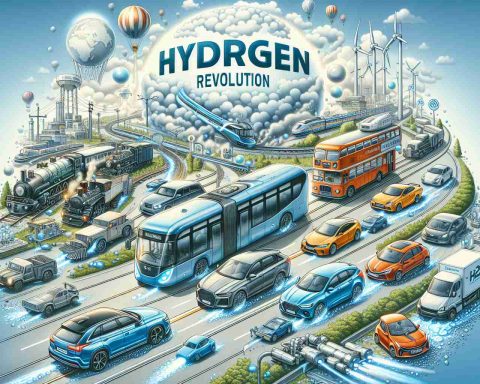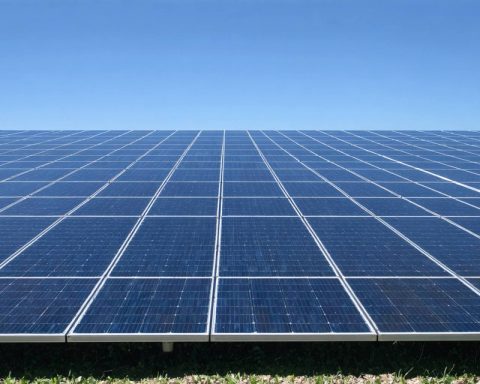Exploration of the Midcontinent Rift could unveil a breakthrough in clean energy solutions.
The Midcontinent Rift, a significant geological feature that spans beneath Lake Superior and extends through parts of Minnesota, Michigan, Wisconsin, Iowa, Nebraska, and Kansas, is drawing attention for its potential as a natural hydrogen source.
Research teams from the University of Nebraska–Lincoln are spearheading studies on this intriguing site. They have identified the area as promising due to its abundant natural hydrogen deposits. This resource could revolutionize energy production, providing a sustainable alternative to traditional fossil fuels.
The demand for hydrogen is escalating globally. As countries aim to transition to cleaner energy, hydrogen emerges as a key player capable of decreasing carbon emissions. The rift, formed over a billion years ago from volcanic activity, offers the ideal conditions for hydrogen production as water and volcanic rock interact underground.
Research efforts are receiving substantial support. A $1 million grant has been awarded to the project by the National Science Foundation. The funds will support research into various facets of hydrogen, such as its storage and extraction possibilities, geological interactions, and microbial processes.
The unique geological settings of the Midcontinent Rift might foster substantial deposits of hydrogen, making extraction economically viable. As research advances, this project holds promise for significantly boosting clean energy initiatives and could help shape a hydrogen-fueled future.
Hydrogen from the Heartland: Potential Impacts and Controversies
The ongoing exploration of the Midcontinent Rift for natural hydrogen deposits could be a transformative development in the quest for sustainable energy sources. This geological feature, which stretches beneath Lake Superior and into several U.S. states, has captured the attention of scientists and policymakers alike.
Implications for Communities and Economies
Discovering commercially viable hydrogen reserves in the Midcontinent Rift could have profound effects on local communities and economies. The potential for job creation is significant; workers will be needed for various roles, including scientific research, resource extraction, infrastructure development, and logistics. These developments could revitalize the regional economy, providing opportunities in areas that have faced industrial decline in recent years.
Furthermore, the creation of local hydrogen production facilities would decrease regions’ dependence on fossil fuels, aligning with global efforts to combat climate change. This shift could reduce the carbon footprint of businesses and individuals, fostering a cleaner and more sustainable environment for future generations.
Interesting Facts about Hydrogen
Hydrogen is the most abundant element in the universe and can be harnessed as a clean energy source that produces only water when used in fuel cells. Its versatility allows it to be used in various applications, from powering vehicles to storing energy produced by renewable sources like wind and solar power. This makes it a highly attractive solution in the transition to a low-carbon economy.
However, unlike other energy sources that are more readily accessible, hydrogen often needs to be separated from compounds, which can be energy-intensive. The Midcontinent Rift’s natural hydrogen deposits offer a unique opportunity to access this clean resource more directly and potentially more economically.
Controversies Surrounding Hydrogen Exploration
As with many resource extraction initiatives, exploring the Midcontinent Rift for hydrogen presents its share of controversies. Environmental concerns are paramount, as the impact of drilling and other extraction methods must be carefully managed to prevent damage to sensitive ecosystems.
Moreover, there is debate over whether resources and funding should prioritize hydrogen over other renewable energy sources. Critics argue that investment in solar, wind, and battery storage technologies might yield quicker and more substantial carbon reduction results. Others emphasize that diversifying the energy mix is essential for a resilient future energy system.
The Global Context
The global race to switch to renewable energy sources means that breakthroughs in hydrogen production in the Midcontinent Rift could place the United States at the forefront of this pivotal shift. It holds the potential to become a key player in the burgeoning international hydrogen market, which is expected to grow significantly as countries strive to meet climate targets.
Extensive research and international collaboration will be essential in navigating these challenges and opportunities. The effort to explore the Midcontinent Rift represents not just a local endeavor but a piece of a larger puzzle that is the global energy transition. As researchers from the University of Nebraska–Lincoln and other institutions continue their work, the results could forge new paths in sustainable energy development.
For more information on sustainable energy solutions and current research trends, consider visiting the National Renewable Energy Laboratory and the U.S. Department of Energy.
















